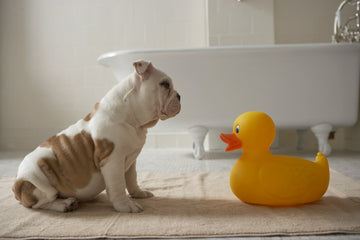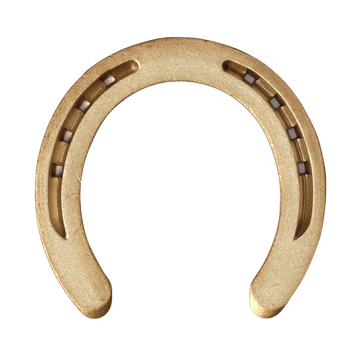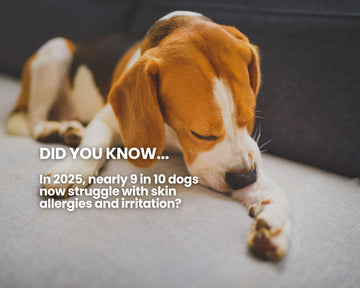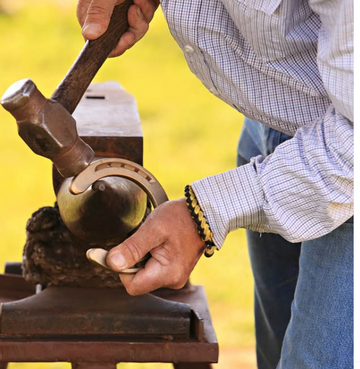Wondering how often to bathe your puppy? Generally, puppies should be bathed once a month, but this can vary based on their coat type and lifestyle.
Read on to learn the best practices for keeping your puppy clean and healthy.
Key Takeaways
-
Monthly baths are ideal for most puppies, but adjust frequency based on coat type and lifestyle.
-
Start bathing puppies at 8 weeks old; before then, use a warm cloth to maintain hygiene.
-
Choose puppy-specific shampoos that are hypoallergenic and gentle to protect their delicate skin.

Why Bathing is Essential for Puppies
Keeping your puppy clean helps prevent skin infections and allergies. Regular baths keep their coat clean, removing dead skin cells and dander, which helps protect their sensitive skin. Bathing removes debris and bacteria that can cause infections and eliminates unpleasant odors. After all, who wants their puppies to stink?
Beyond the physical benefits, the dog bathing process can also strengthen the bond between dog owners and their puppies. Bath time is an opportunity for trust and affection to grow. Proper bathing encourages the production of natural oils that promote a healthy, shiny coat, leaving your puppy’s fur softer and less itchy.
Bathing your puppy ensures their health and fosters a loving relationship. Knowing how often to bathe your puppy keeps them at their best.
Ideal Bathing Frequency for Puppies
Generally, puppies should be bathed once a month. This frequency helps maintain their natural coat oils while keeping them clean. However, factors like coat type and lifestyle can alter this frequency.
Puppies with longer fur may need baths more frequently, at least monthly or even more often, to prevent tangling and matting. On the other hand, short-coated puppies might be fine with monthly baths, as their fur doesn’t tangle as easily. If your puppy has a particularly active lifestyle or gets dirty often, you may find that more frequent baths are necessary to keep them clean and comfortable.
Tailor the bathing schedule to your puppy’s specific needs. Short-haired dogs might need fewer baths than long-haired ones. These nuances help keep your puppy clean and healthy without causing dry skin.
Age Considerations for Puppy Baths
Your puppy’s age determines when to start bathing them. Puppies can generally start bathing at 8 weeks old. Avoid bathing puppies younger than 8 weeks as their skin and immune systems are still developing.
Use a warm, wet cloth to clean puppies under 8 weeks instead of a full bath. This gentle method maintains hygiene without the risks of a full bath. Ensure the cloth is warm and not too wet to avoid chilling your pup.
Determining Bathing Needs by Coat Type
Coat type significantly influences bathing frequency. Short, smooth-coated puppies might need baths every three months. Their fur traps less dirt and debris, reducing the need for frequent baths. A puppy’s coat can also affect how often they require grooming.
Long-haired breeds like Golden Retrievers need baths every four to six weeks to prevent tangling and matting. Curly or wiry-coated dogs, such as Poodles, often need more frequent baths to manage their coats.
Regular grooming keeps your puppy clean and reduces bath frequency. Regular brushing removes loose hair and dirt, making baths easier and less frequent.
Indoor vs. Outdoor Puppies
Your puppy’s lifestyle determines their bathing needs. Outdoor puppies need more frequent baths to prevent dirt, oil, and bacteria buildup. Outdoor puppies get dirtier faster, requiring more regular washing.
Indoor puppies generally require less frequent washing. Playtime, indoors or outdoors, can increase the need for baths due to dirt accumulation.
Seasonal changes and weather conditions can also affect bathing frequency. Understanding your puppy’s lifestyle helps keep them clean and healthy, whether they are an indoor or outdoor pup.
Managing Skin Conditions and Allergies
Consult a veterinarian before choosing a dog shampoo if your puppy has sensitive skin or allergies. A vet can recommend the best products and washing schedule adjustments for your puppy’s needs.
Regular baths alleviate allergens like pollen and dust, reducing skin irritation and itching. Medicated shampoos recommended by a vet can benefit puppies with skin conditions. Avoid shampoos with artificial fragrances to prevent allergic reactions.
Nutritional diets designed for skin health can also help reduce itchy skin. Identifying allergens through testing can guide treatment, keeping your puppy comfortable and healthy.
Preparing for Bath Time
Proper preparation ensures a successful bath time. Gather dog shampoo, towels, and a non-slip mat to create a safe bath environment. Select a bathing spot based on your puppy’s size and comfort, like a bathtub for larger dogs or a sink for smaller pups.
A calm setting with reduced lighting and soothing music can ease an anxious puppy. Gradually introduce your puppy to bath time by familiarizing them with the bathing area without water. This method reduces anxiety and makes bathing more manageable.
Lukewarm water ensures your puppy’s comfort and safety. Avoid hot or cold water, as it can be uncomfortable and harmful.

Step-by-Step Bathing Process
Brushing your puppy’s coat before bathing prevents tangles and mats from worsening. Use high-value treats during the bath to create positive associations and keep your puppy calm. A gentle water setting ensures your puppy’s comfort.
Use a handheld shower head to bathe your puppy, avoiding direct sprays to the face. Use a towel to absorb excess moisture after the bath before using a hair dryer, especially for long or thick coats. Keep hair dryer sessions short and be patient to avoid scaring your puppy.
A high-velocity dryer effectively removes dead hair while drying the coat for puppies with a lot of undercoat. Ensuring your puppy remains comfortable and calm is key to a successful bath.
Choosing the Right Shampoo
Selecting the right shampoo is crucial for your puppy’s delicate skin. Puppy shampoos nourish and hydrate young dogs’ skin without causing irritation. Use puppy or dog shampoo designed specifically for canines.
Good puppy shampoo should be hypoallergenic and gentle. Some recommended brands for puppy shampoos include Dermcare, Virbac, and Blackmore’s. Avoid human shampoo as it can strip natural oils from your puppy’s coat.
Post-Bath Care Tips
Properly drying your puppy after the bath is essential. Absorb as much moisture as possible with a towel before using a hair dryer. Keep initial hair dryer sessions brief to avoid overwhelming your puppy. Reassure your puppy during this process, as the noise can be unsettling.
Gradually introduce the hair dryer by exposing your puppy to its noise while providing positive reinforcement. Gently brushing a damp coat helps minimize damage and keeps it looking its best. A leave-in conditioner helps prevent tangles and keeps your puppy’s fur soft and manageable.
Summary
In summary, regular bathing is essential for your puppy’s hygiene and overall health. From understanding the ideal frequency based on coat type and lifestyle to managing skin conditions and choosing the right shampoo, each aspect plays a crucial role in keeping your pup clean and healthy. Bath time can also be a bonding experience that strengthens your relationship with your puppy.
By following these best practices, you can ensure that bath time is a positive and stress-free experience for both you and your furry friend. Remember, a clean puppy is a happy puppy, and maintaining their hygiene is an integral part of responsible dog ownership.
Frequently Asked Questions
How often should I bathe my puppy?
Bathing your puppy once a month is generally recommended to keep their coat healthy and clean. Adjust this frequency based on their activity level and coat type for the best results!
Can I use human shampoo on my puppy?
Using human shampoo on your puppy is not advisable, as it can irritate their sensitive skin and strip away natural oils. Choose a puppy-specific shampoo for a safe and gentle clean!
When can I start bathing my puppy?
You can start bathing your puppy when they are 8 weeks old, so get ready to enjoy those fun bath time moments! For younger pups, stick to a warm, wet cloth for cleaning.
How do I prepare my puppy for bath time?
To make bath time a positive experience for your puppy, gather essential items like dog shampoo and towels, and choose a calm, comfortable spot. With patience, gently introduce your puppy to the bathing area to build their confidence.
What should I do if my puppy has sensitive skin or allergies?
If your puppy has sensitive skin or allergies, consult a veterinarian for tailored advice and consider regular baths with appropriate shampoos to help remove allergens. Taking these steps will ensure your furry friend stays comfortable and healthy!










